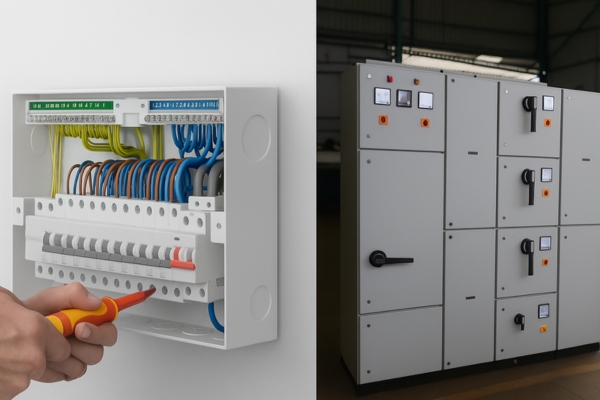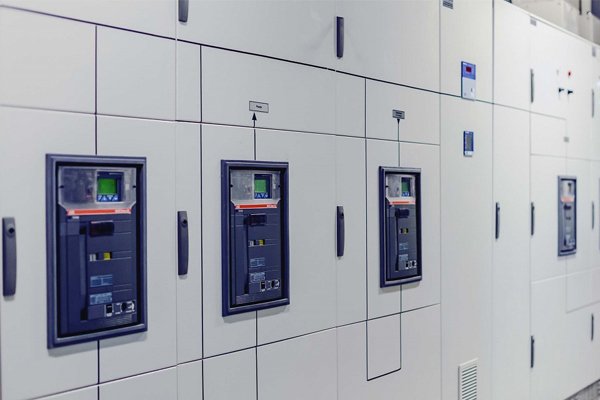Distribution Panel Board
What are Distribution Panel Boards?
Distribution panel boards are essential electrical components used to distribute power from a main source to various circuits. They ensure the safe and efficient flow of electricity across industrial, commercial, and residential setups. These boards act as a centralized hub, managing and controlling power distribution while protecting circuits from overloads and short circuits.
Key Features:
- Durable Construction: Built with high-quality materials for long-lasting performance.
- Customizable Design: Tailored to suit specific client requirements and applications.
- Safety Compliance: Adheres to international safety standards to ensure optimal performance.
- Compact and Space-Saving: Designed to fit seamlessly into various setups.
- Efficient Circuit Protection: Equipped with advanced safety mechanisms to prevent electrical hazards.
Applications:
- Industrial Units: Powers heavy machinery and ensures smooth operations.
- Commercial Buildings: Supports lighting, HVAC systems, and other electrical needs.
- Residential Complexes: Ensures reliable electricity distribution across homes.
- Renewable Energy Systems: Distributes power from solar panels or wind energy setups.
- Data Centers: Ensures stable power supply to critical IT infrastructure.
As a distribution panel boards supplier, DJ Electro Controls delivers high-performance solutions that cater to diverse industries. We pride ourselves on being a leading distribution panel boards manufacturer, offering reliable, efficient, and customizable products for all your electrical needs.
Distribution Panel Board Solutions for Modern Electrical Systems

Functional Role of a Distribution Panel Board in Power Systems
Key Engineering Design Considerations for Indian Conditions
Construction Materials and Components
Lifecycle Value and Long-Term Cost Efficiency
A well-engineered distribution panel board minimizes total cost of ownership over its lifecycle. Here’s how:
Reduced Maintenance Costs
Longer Equipment Life
Energy Optimization
Fewer Emergency Downtimes
Customization Options to Suit Diverse Applications
Not all environments or projects require the same configuration. Dj Electro Controls offers customization in:
Finish and Aesthetics
Powder coating colors, IP ratings, and door configurations are adaptable to match the internal or external installation conditions.
Monitoring Features
Mounting Types
Circuit Configuration
Number and type of breakers,
feeder design, and auxiliary
components.
Form of Separation
This modularity allows end users to receive systems that integrate smoothly into their existing setups while meeting compliance, safety, and operational benchmarks.
Compliance and Testing Standards Followed
- Short-circuit withstand capability
- Dielectric strength and insulation resistance
- Temperature rise limits
- Continuity of protective circuits
Compliance certificates and quality documents are issued with each unit. Boards are also inspected for mechanical integrity, paint finish, and component fitment. This process ensures consistency, traceability, and accountability from manufacturing to installation.
Maintenance Guidelines and After-Installation Checks
Frequently Asked Questions
Q1: What is the difference between a panel board and a switchboard?
Q2: How often should distribution panels be serviced?
Service intervals depend on the environment and load type, but quarterly checks and annual preventive maintenance are recommended.


